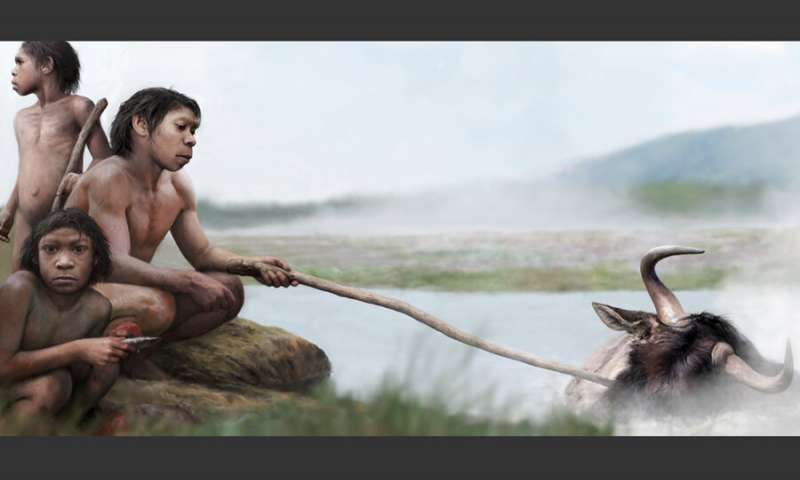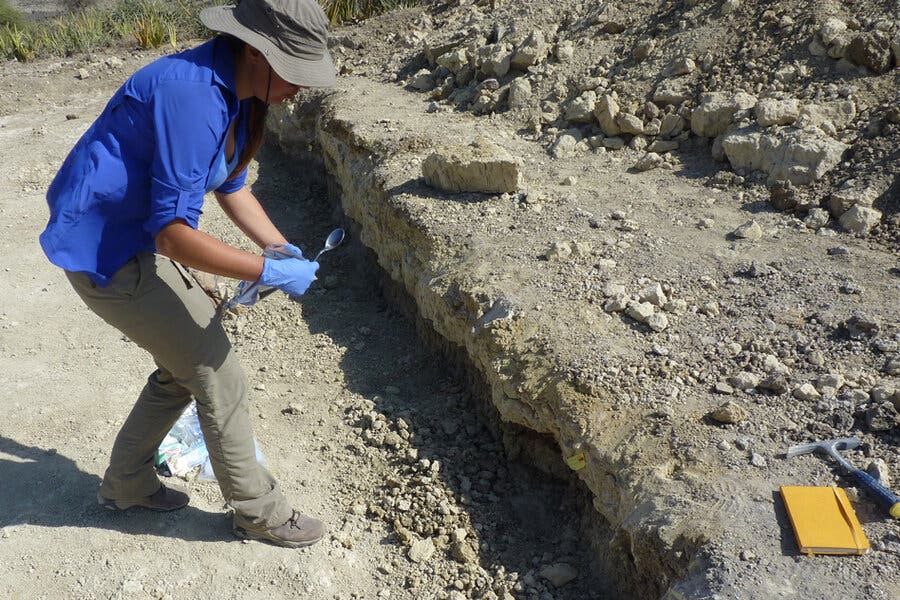
While they were collecting sediments to determine what the ancient climate might have looked like in the Olduvai Gorge, a rift valley in northern Tanzania, scientists came across an unexpected discovery.
About 1.8 million years ago, the sites analyzed by the researchers were likely littered with hydrothermal springs. Their location coincides with ancient animal remains and stone artifacts manufactured by human ancestors. Did these early hominids use these hot springs to cook and boil their food? That’s an appealing possibility explored in a new study.
“As far as we can tell, this is the first time researchers have put forth concrete evidence for the possibility that people were using hydrothermal environments as a resource, where animals would’ve been gathering, and where the potential to cook was available,” says Roger Summons, the Schlumberger Professor of Geobiology in MIT’s Department of Earth, Atmospheric, and Planetary Sciences (EAPS).
Nature’ slow cooker
In 2016, archaeologists at MIT and the University of Alcalá in Spain were in the field at Olduvai Gorge collecting sediments from a 3-km-long layer of exposed rock that is estimated to be 1.7 million years old. Just a few inches below, a markedly different layer of dark clay could be noticed, which was deposited 1.8 million years ago.
This visible difference in the sediment layers points towards a sudden change in the environment around 1.7-1.8 million years ago. Around that time, previous analyses concluded that East Africa underwent a gradual aridification, shifting the landscape from wet and luxuriant to dry and grassy.
Ainara Sistiaga, a Marie Sklodowska-Curie fellow based at MIT and the University of Copenhagen, and the study’s lead author, brought back some of the rocks from Olduvai Gorge to Summons’ lab. Their analysis revealed lipids that contain residue of leaf waxes.
“You can reconstruct something about the plants that were there by the carbon numbers and the isotopes, and that’s what our lab specializes in, and why Ainara was doing it in our lab,” Summons says. “But then she discovered other classes of compounds that were totally unexpected.”

But some of the lipids found in the sediments were not originally from plants. Summons recognize the lipids as belonging to a specific group of bacteria that he and colleagues had studied more than 20 years ago. These bacteria live inside hot springs at Yellowstone National Park.
One such bacterium, Thermocrinis ruber, exclusively lives in very hot waters, such as those found in the outflow channels of boiling hot springs.
Most bacteria will die if you boil them above 80 degrees Celsius. But Thermocrinis ruber exclusively grows when temperatures are above 80 degrees Celsius.
“Some of the samples Ainara brought back from this sandy layer in Olduvai Gorge had these same assemblages of bacterial lipids that we think are unambiguously indicative of high-temperature water,” Summons said in a statement.
If the ancient lipids at Olduvai Gorge were produced by ancient bacteria similar to modern hot spring-loving bacteria, then high-temperature features such as hot springs and hydrothermal waters could also have been present could have also been present at the site 1.7 million years ago.
“It’s not a crazy idea that, with all this tectonic activity in the middle of the rift system, there could have been extrusion of hydrothermal fluids,” notes Sistiaga.
Considering the wealth of animal remains and stone artifacts crafted by ancient human ancestors in the area, the researchers introduce the fascinating possibility that hot springs may have been used to cook food.
Butchered animals could have been dipped in the hot springs to make them palatable. Similarly, roots and tubers could have been boiled. From time to time, wild animals may have fallen in these hot springs, from which they would have been fished ready to serve.
“If there was a wildebeest that fell into the water and was cooked, why wouldn’t you eat it?” Sistiaga wonders.
It’s virtually impossible to say for sure that humans used hot springs to cook their food, but if ancient humans were smart enough to make their own tools, there’s no reason to believe some individuals wouldn’t have taken advantage of a natural, 24/7 boiling pot.
“We can prove in other sites that maybe hot springs were present, but we would still lack evidence of how humans interacted with them. That’s a question of behavior, and understanding the behavior of extinct species almost 2 million years ago is very difficult, Sistiaga says. “I hope we can find other evidence that supports at least the presence of this resource in other important sites for human evolution.”






